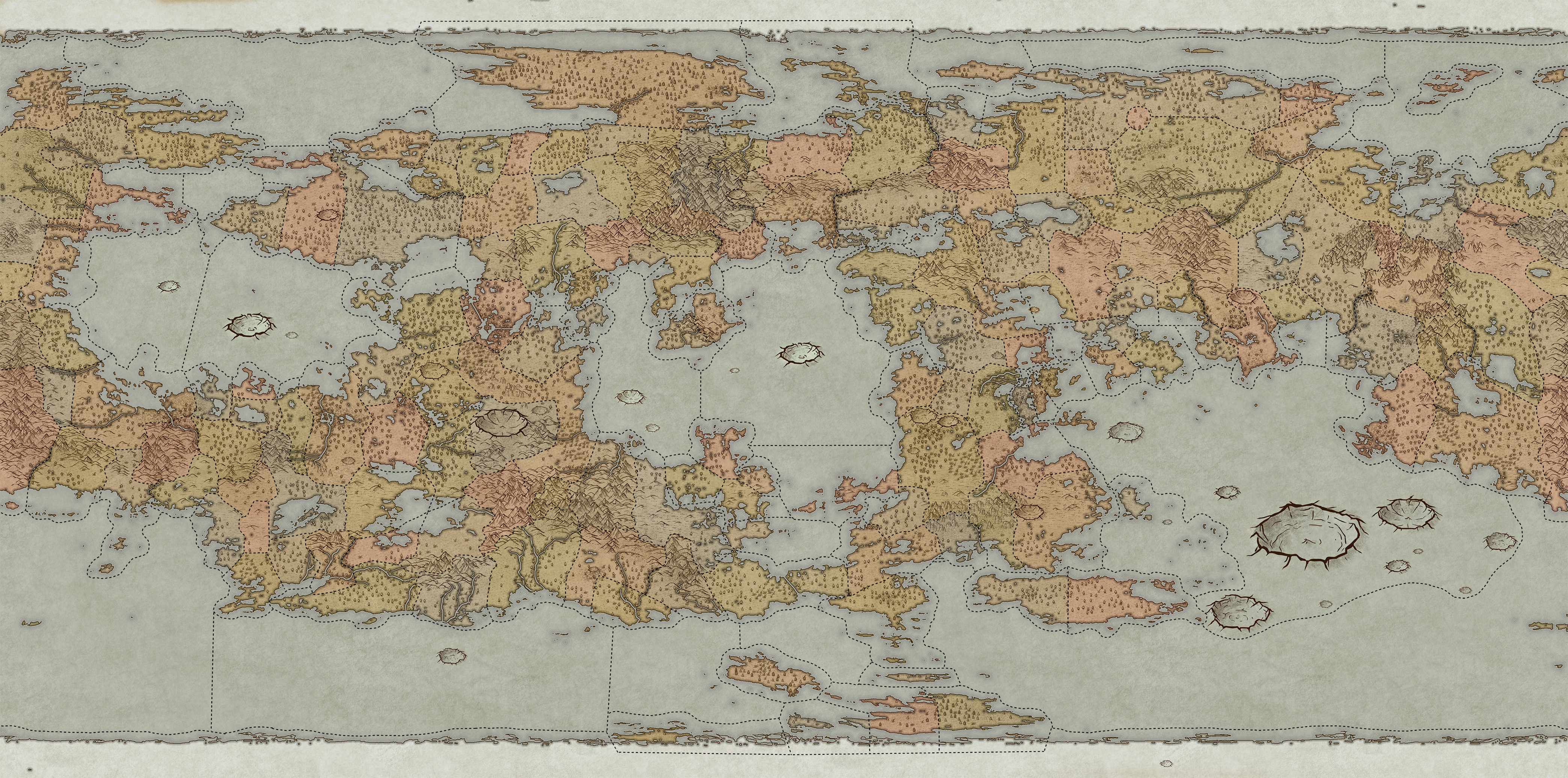Dwarven Roads
The Alternative To Boats
The dwarven tunneling system, often just called the dwarven roads, refers to a large series of passages that span the length of the world just below the earth's surface. Mined by the dwarves, the most ancient of these tunnels is thought to have begun its construction in the early part of the 1st Era. Their purpose was originally to span segements of land that were otherwise difficult to travel between with the violent tides seen in the early days of the world, often connecting what would otherwise become islands at highest tides in a fashion that allowed travelers to ignore the tidal shifts. These passages have been expanded upon throughout the ages, connecting more populated areas and improved with the latest in dwarven traveling technology.The History of the Tunnels
1st Era
The oldest of the tunnels, often thought to be those connecting parts of the continent of Mzeling together, seemed to have begun construction in the early part of the 1st Era. Though these tunnels have been greatly changed and reinforced, some sections still show ancient mining techniques, and small off-shoot tunnels with relics dating back to before the fall of the first moon have been discovered.2nd Era
Though tidal changes significantly decreased after Honoun's collapse , scholars believe tidal changes still left Mzeling and much of Tshasir disconnected from other land masses, and many believe with tunnels already in the works there was no point in discontinuing them. Despite a increased ability to travel over land, dwarven tunnels grew popular as a method of expodited travel. Though it would not be until the 3rd Era that improved forms of transportation were implimented, dwarven tunnels became highways of merchants and goods, and existing tunnels were expended with the expectation that carts and other large vehicles would be pulled through.3rd Era
Though Baza's disapperance lessened the tidal changes even further, the access to magic allowed for a new era of tunneling. Longer and more structurally sound tunnels could be mined at a speed previously unheard of, allowing for drastic expansion to the existing system - including more straight-forward paths between points that were previously impossible. Additionally, as magic research grew, so did new methods of travel. The most populated and well-used tunnel systems began to be outfitted with the newest models of train, allowing for efficient and speedy travel between dwarven gates.Today
Dwarven tunnels are one of the most popular forms of travel, especially between close points. They provided the bulk of trade and travel between dwarven gates, as well as between the Underground and the Surface. They compete closely with ships as a form of long-distance travel for those without magical means, and are generally considered more useful and comfortable for intracontinental travel.Tunnels & Trains
StuffCulture & Politics
Laws & Legality
The dwarven gates and dwarven tunnels tend to be considered a hot spot of political contention. While created by the dwarves, they often are considered a grey spot between the laws of the Surface and the laws of the Underground. Each gate and road is often subject to its own set of rules - partially determined by the depth of the road (as with (LAW)), and partially determined by more nebulous political debate. As a result, the dwarven tunnels are a hot spot for contraband and illegal activity - more often than not, it is the laws of the Underground kingdoms that determine what is and is not legal, and this has allowed what would pass as illegal activity on the surface to thrive just out of reach. Several stretches of road are well known for various illegal trades, including running illegal contraband between countries in which it is legal, without having to pass surface borders in which they'd be arrested. As a result, some dwarven gates have incredibly tight security for those coming and going from them.Side Paths
While the main bulk of the tunnel exists as a single generally straight tunnel from one point to another, many smaller branching paths have been dug over the millenia. Some of these were mined by the dwarves during construction - camps for their workers, places to store supplies, alcoves that help support and run the train systems, and occasionally full small towns who exist to restock and harbor travelers. Others were dug with a variety of purposes from a variety of creators, including short cuts, smuggling dens, and simply new places to live. Most side paths and offshoots of the main tunnel are considered off-limits or generally unsafe by the governing bodies of the tunnel - usually there's no way to reach them without walking on the tracks of tunnels that run trains, or they are considered to be 'unofficial' and not vetted to security or safety.These side paths are often homes of ratfolk in particular, who are known to build entire small colonies and cities just off the beaten paths - even those that are running trains. Some partake in trading and restocking travelers, often being well known for being more than a little shady and having some of the most varied stock of any trader. Others are known for using their winding self-dug tunnel systems to smuggle and steal from unwitting merchants and travelers, including from passing trains.



Comments